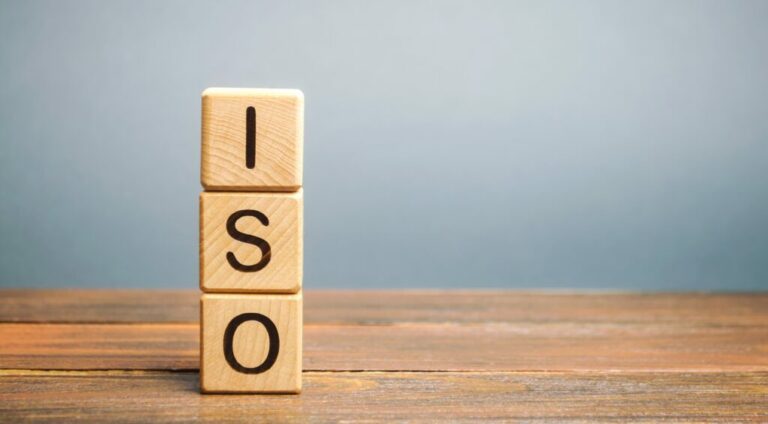

ISO standards have great importance in the business context. Although they are not mandatory, they are a way to standardize processes and ensure they work properly. This is the case with ISO/IEC 20000.
In this case, we are talking about a standard aimed at the construction and good functioning of a Service Management System (SMS).
Here on the blog, I have already talked about basic and extremely important concepts such as IT Service Management (ITSM) and ITIL. However, we can say that ISO/IEC 20000 relates to all of this.
To give you an idea, many of the practices described in ITIL 4 are present in this standard.
But then, what exactly is ISO/IEC 20000? How can it help IT services? That’s what I’m going to explain to you!
What is ISO/IEC 20000?
ISO/IEC 20000, like other ISO standards, is an internationally recognized standard for an IT Service Management System.
And what does that mean?
So, this standard helps organizations implement a reliable system to provide IT services (However, some organizations that provide other types of services also follow this standard).
Such a system is implemented and operated to provide visibility, control of services, and continuous improvement.
The benefit of this: more effectiveness and efficiency of services.
In the ISO/IEC 20000 document, you can check an illustration of this system:


Source: ISO/IEC 20000
See that many of the terms found in the standard are the same as those we see in ITIL.
All of this structure has requirements described in the document.
What is ISO/IEC 20000 like?
ISO/IEC 20000 is aligned with the high-level structure and terminology of what we call “Annex SL,” an appendix to the ISO Directives.
This structure is applied to several other management systems, such as:
- ISO 9001 – Quality Management System;
- ISO 14000 – Environmental Management System;
- ISO/IEC 27001 – Information Security Management System.
The application of this high-level structure results in several requirements that are the same across these standards. In addition, ISO/IEC 20000 consists of 10 clauses:
- Scope – A general description of what the standard involves;
- Normative References – In the case of ISO/IEC 20000-1, there are no references here, and therefore it can be used as an independent standard;
- Terms and Definitions – Section with the main terms used in the standard, such as service, process, among others;
- Organization Context – Section of the standard that requests a series of activities to determine internal and external issues to the organization;
- Leadership – Section that deals with the requirements for top management;
- Plan – Section that deals with the step-by-step planning of the Service Management System;
- Service Management System Support – Clause that talks about the requirements for some elements that help maintain the functioning of the SMS;
- Service Management System Operation – Clause that offers requirements for various processes involved in the operation of the System, such as Change Management and Incident Management;
- Performance Evaluation – Requirements for measuring all SMS results;
- Improvement – Clause that displays the requirements for adopting improvement actions.
What do people who have adopted ISO/IEC 20000 think?
According to data collected by the British Standards Institution (BSI), 68% of its customers believe that ISO/IEC 20000 makes the company inspire more confidence in the business. 54% see an improvement in products and services, and 44% said that the standard reduces any type of risk.
In addition, a 2019 survey identified the most popular ISO standards ranked ISO/IEC 20000 in eighth place. This means that many companies are seeing the benefits of obtaining an ISO certification for service management.
Conclusion
ISO/IEC 20000 is much more than a mandatory document or standard to be followed. It is a kind of guide to best practices for your company to succeed in providing services.
For companies that provide services, the message is that it is worth basing their processes on ISO/IEC 20000. For IT service management professionals, in addition to knowing some best practice guides such as ITIL and PRINCE2, mastering the requirements of ISO/IEC 20000 can be a differential to grow in the field.
If you liked this content, be sure to comment and share with your friends! Also, don’t forget to check out other articles on this site.


Your article post is so amazing. This post is so informative. ISO/IEC 20000 is much more than just a rule that must be followed. It functions as a form of best practices manual for your business’s ability to succeed in offering services. The takeaway is that service-based businesses should consider basing their operations on ISO/IEC 20000. But do you think you need implement start from here: ISO 27001 will help to understand the ISO 27001 and ISO 20000
I appreciate the wonderful information. For any organisation in any field, information security is absolutely necessary. Many ISO standards, including ISO 20000, ISO 27001, CMMI, and others, have been developed specifically for information security, data privacy, and other topics. For instance, it must be vital to create and maintain suitable CMMI documents that can serve as guidelines both during and after the implementation of the standard in order to implement the standard and preserve the data.